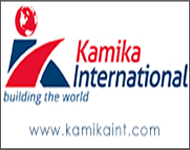.jpg) The African Development Bank's (AfDB) board of directors in Abidjan approved €345 million in funding for road construction support for Tanzania and Kenya.
The African Development Bank's (AfDB) board of directors in Abidjan approved €345 million in funding for road construction support for Tanzania and Kenya.
The African Development Bank and African Development Fund loans for Phase I of the Mombasa-Lunga Lunga/Horohoro and Tanga-Pangani-Bagamoyo roads account for 78.5 percent of the total €399.7 million project cost. Kenya's government received a grant from the European Union worth €30 million, or 7.7% of the overall project cost.
The road connects Kenya and Tanzania and is an important part of the East African transport corridors network. Producers, retailers, and merchants would be able to transfer products faster and for less money. Farmers and fishermen would also benefit from increased access to local and regional markets and services, such as improved schools and health centres.
“The project would have spillover benefits for hinterland countries that depend on Mombasa as a gateway to global markets, such as the Democratic Republic of the Congo, Burundi, Rwanda, Uganda, and South Sudan,” said Hussein Iman, the Bank's Regional Sector Manager for infrastructure, private sector, and industrialization.
The Bank's assistance will also promote roadside trade for vendors, many of whom are women who currently work in disorganised and dangerous conditions.
The path runs through areas with high rates of youth unemployment. As a result, the project involves a vocational training feature for 500 unemployed youth (half of whom are women) to gain marketable skills and increase their economic prospects.
The Bank anticipates that the intervention would improve regional integration by shortening travel times, promoting commerce and cross-border movement of people, and increasing access to tourist attractions. The project will also link the ports of Dar es Salaam, Tanga, and Mombasa, as well as boost the blue economy in coastal areas.
This first step entails the building of 175 kilometres of road sections, including the 121-kilometer Mkanga-Pangani road segment in Tanzania and the 54-kilometer Mombasa-Kilifi road section in Kenya.
The intervention is a focus item in the Bank's Eastern Africa Regional Integration Strategy (EA-RISP), both countries' Country Strategy Papers (CSPs), which aligns with two of the Bank's High 5 priorities: Integrate Africa and Improve the Standard of Life for Africans.
Kenya and Tanzania place a high value on regional integration. Weak infrastructure, on the other hand, has been a big impediment.
This week, the Bank witnessed the signing of a $440 million agreement between Japan International Cooperation Agency (JICA) and the Kenyan government for the first phase of construction of a bridge linking Mombasa island and Likoni, a major East African international port city.
The Mombasa Gate Bridge will be Africa's longest cable-stayed bridge, providing a vital connection across the Indian Ocean along the recently approved Mombasa – Lunga Lunga/Horohoro and Tanga – Pangani – Bagamoyo corridor step I.
When additional stages of the project are completed, the overall volume of co-financing is estimated to be more than $ 1.2 billion – the biggest co-financing deal between the Bank and JICA.
“We are optimistic that we will all work together to complete this crucial mission and other future projects,” said Nnenna Nwabufo, the Bank's Acting Director General for the East Africa Region, at the signing.
As of the end of November 2019, the Bank's portfolio in Kenya included 27 public and 7 private activities totaling 2.7 billion euros in commitments.
As of the end of November 2019, the Bank's portfolio in Tanzania included 21 public and 2 private activities with a combined commitment of 1.82 billion euros.
Posted on : 28 Dec,2025
.jpg) The African Development Bank's (AfDB) board of directors in Abidjan approved €345 million in funding for road construction support for Tanzania and Kenya.
The African Development Bank's (AfDB) board of directors in Abidjan approved €345 million in funding for road construction support for Tanzania and Kenya.



















